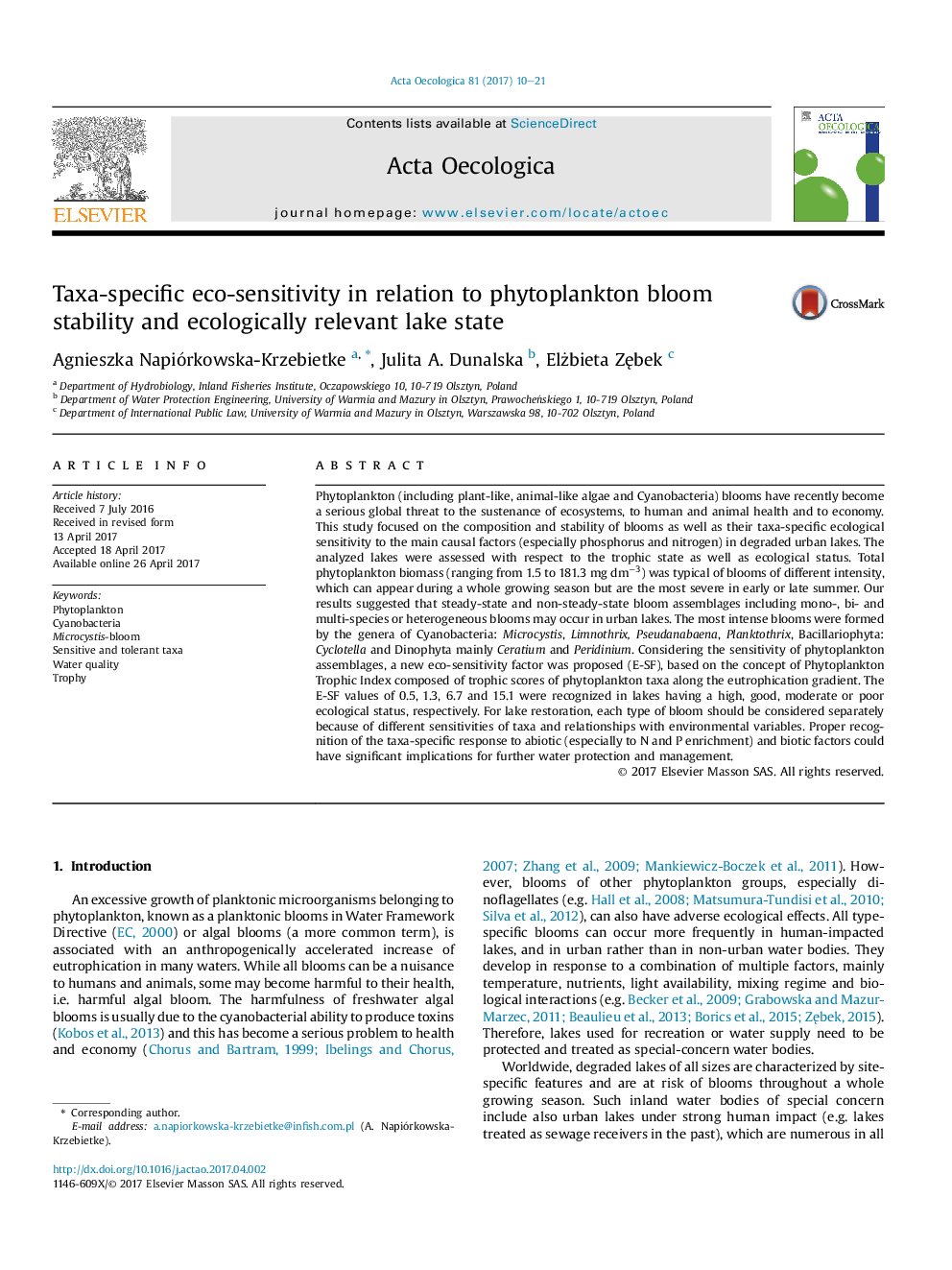| کد مقاله | کد نشریه | سال انتشار | مقاله انگلیسی | نسخه تمام متن |
|---|---|---|---|---|
| 5742481 | 1617691 | 2017 | 12 صفحه PDF | دانلود رایگان |
- Steady-state and non-steady-state bloom assemblages occur in urban lakes.
- Microcystis-bloom, Planktothrix-bloom, Limnothrix-bloom and Ceratium-bloom were common in late summer.
- Newly created eco-sensitivity factor (E-SF) was just proposed.
- The E-SF values of 0.5, 1.3, 6.7 and 15.1 were in lakes having high, good, moderate and poor ecological status, respectively.
Phytoplankton (including plant-like, animal-like algae and Cyanobacteria) blooms have recently become a serious global threat to the sustenance of ecosystems, to human and animal health and to economy. This study focused on the composition and stability of blooms as well as their taxa-specific ecological sensitivity to the main causal factors (especially phosphorus and nitrogen) in degraded urban lakes. The analyzed lakes were assessed with respect to the trophic state as well as ecological status. Total phytoplankton biomass (ranging from 1.5 to 181.3 mg dmâ3) was typical of blooms of different intensity, which can appear during a whole growing season but are the most severe in early or late summer. Our results suggested that steady-state and non-steady-state bloom assemblages including mono-, bi- and multi-species or heterogeneous blooms may occur in urban lakes. The most intense blooms were formed by the genera of Cyanobacteria: Microcystis, Limnothrix, Pseudanabaena, Planktothrix, Bacillariophyta: Cyclotella and Dinophyta mainly Ceratium and Peridinium. Considering the sensitivity of phytoplankton assemblages, a new eco-sensitivity factor was proposed (E-SF), based on the concept of Phytoplankton Trophic Index composed of trophic scores of phytoplankton taxa along the eutrophication gradient. The E-SF values of 0.5, 1.3, 6.7 and 15.1 were recognized in lakes having a high, good, moderate or poor ecological status, respectively. For lake restoration, each type of bloom should be considered separately because of different sensitivities of taxa and relationships with environmental variables. Proper recognition of the taxa-specific response to abiotic (especially to N and P enrichment) and biotic factors could have significant implications for further water protection and management.
Journal: Acta Oecologica - Volume 81, May 2017, Pages 10-21
